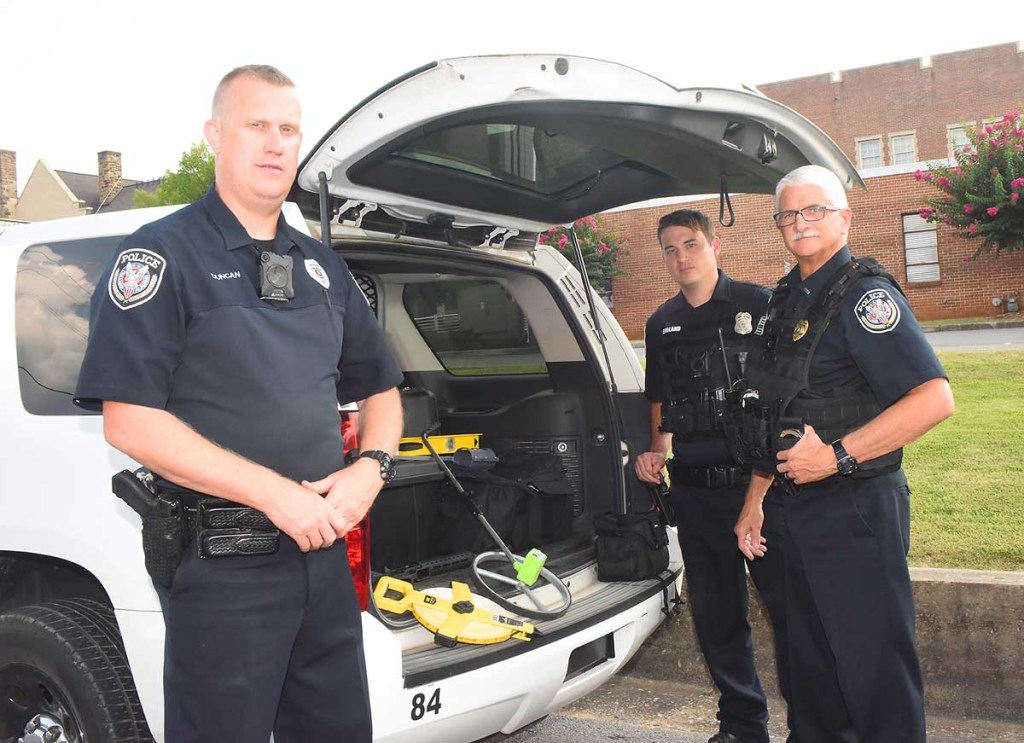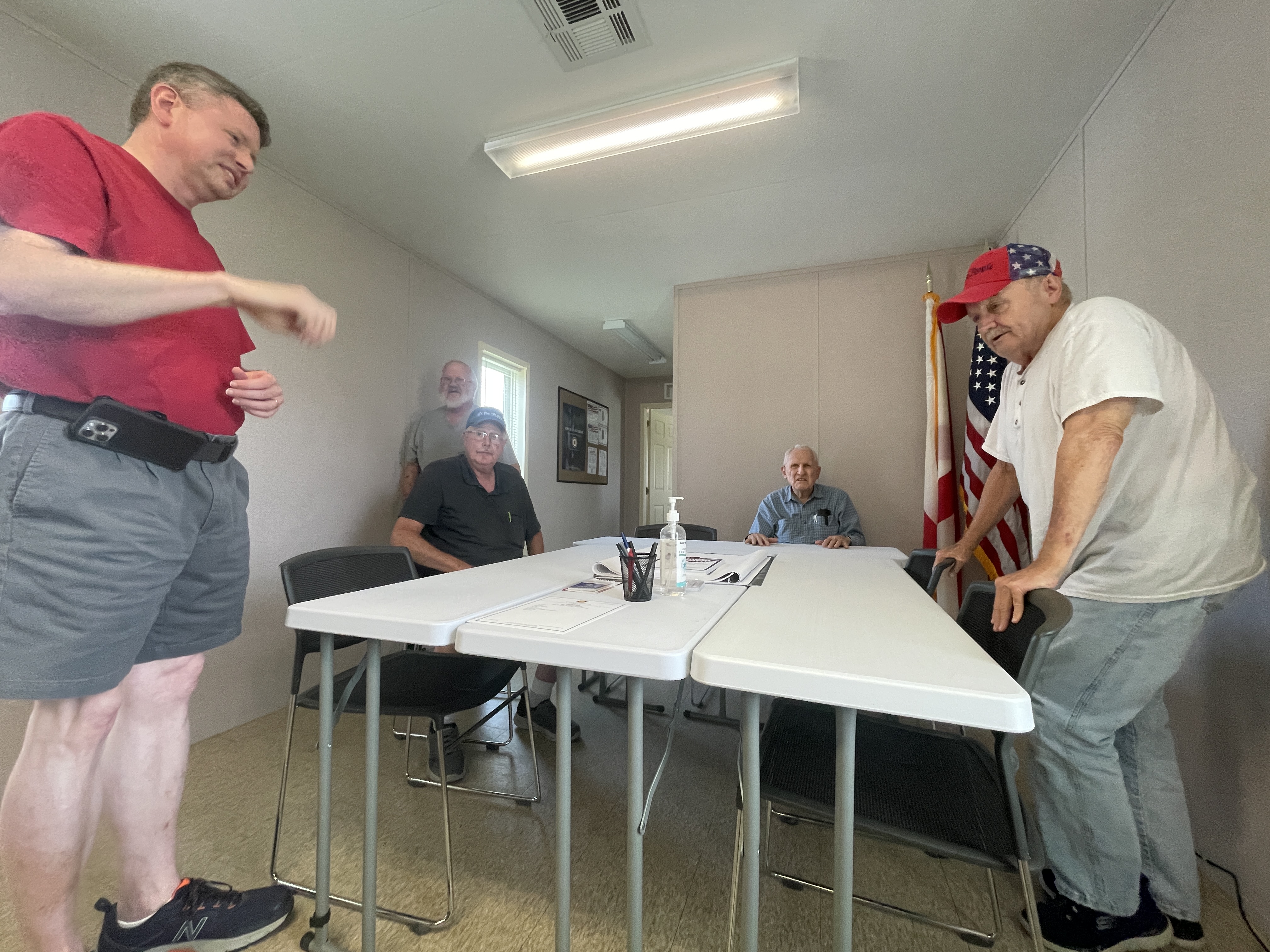On the case: Cullman officers bring special training to scene of wrecks
Published 5:30 am Saturday, July 28, 2018

- Cullman Police Department traffic homicide investigators, from left, are Joey Duncan and Jonathan England and Lt. Jeff Warnke.
All officers of the Cullman Police Department are trained to work automobile accidents, but three officers are specialists when fatalities, injuries and extensive property damage is involved.
Led by Lt. Jeff Warnke, the team of officers includes Joey Duncan and Jonathan England. In police terms, they are officially traffic homicide investigators.
Equipped with tools necessary for measuring and photographing wreck scenes, the real skill of these officers is the intense training they received to secure the designation of traffic homicide investigators.
Eighty hours of course work, involving physics and algebra, earned Duncan and England level one status. Warnke has completed two such grueling courses to achieve level two. Both Duncan and England intend to study and reach the second level, as well. The certification goes as high as level three.
“I’ve put in the budget for them to go to level two. They both want to and are enthusiastic about it,” Warnke said. “We’ve had a traffic homicide investigator since the late ‘70s, but there is more need than ever with our traffic increase and more that you can learn now.”
The need for traffic homicide investigators serves dual needs: learning the cause that leads to a fatality and determining if a driver’s actions can be considered criminal in nature.
“One of the most important aspects of this work is to provide closure for families,” Warnke said. “A lot of the surviving family members want to know exactly what happened that caused a loved one’s death. It’s a sense of closure for them.”
An officer with the traffic homicide investigator status may also be called upon to accompany the coroner in visiting surviving families after an accident.
“That’s always a difficult part of the job, but it has to be done and you have to accept it’s going to be a hard part of working in law enforcement,” Warnke said.
The investigators, through their experience of extensively working traffic accidents, have found that the leading cause of accidents in the city is a motorist following another driver too close, or tailgating. Duncan said that one act accounts for about 70 percent of accidents.
“The other is definitely distracted driving,” England said. “There can be a lot of factors considered distracted driving, but it would be the second cause. It’s very difficult at this point to prove that cell phones are factors in wrecks.”
Warnke backs up England’s observation, noting that most of the accidents officers work occur on sunny days with no weather factors to consider.
“You would think it’s rain and other weather conditions, which are a factor, but definitely more happens when the weather is nice,” Warnke said.
Duncan said the state needs to update laws on distracted driving to broaden the range of what it means.
“Georgia has tougher laws on distracted driving and they enforce it,” he said.
The science of traffic investigation is an area of police work that Duncan has adapted to well. He works fulltime in traffic duty and accepts the challenge of the investigative role.
“I’ve always liked traffic investigations, whereas a lot of officers work at drug investigations and all the other areas,” Duncan said. “We can take a skid mark, measure it and give a speed at the time of impact. But there’s a lot more we examine in the process and it helps us discover exactly how an accident occurred.”
Among the evidence that few think about in an accident are gouge marks in the pavement that happen when vehicles collide and the frames press down into the road.
“We do this because it’s an investigative skill that helps us find the truth when accidents occur, and we have a lot of them now,” Warnke said.
Duncan said in 2007 it was common to work 250-300 accidents per year, but that has risen to 1,000 or more annually.
“I’m glad we have officers who are trained and focused on traffic,” Duncan said. “We’re growing in Cullman and we see so many more motorists than we used to, and it’s happened in a short time. We feel like we’re doing something that is an important service to the community.”
250-300
Accidents in 2007.
1000
Accidents in 2017.
70
Percentage of accidents caused by tailgating.





